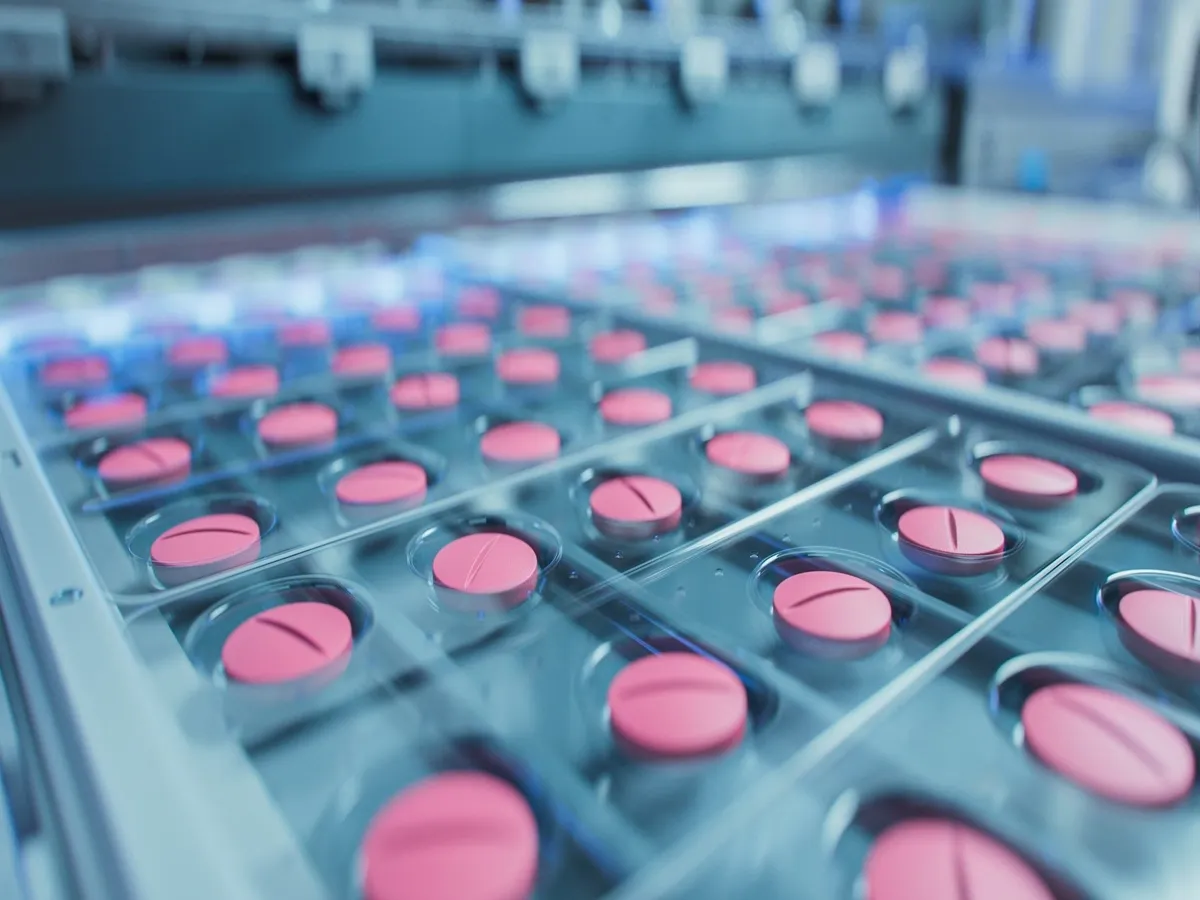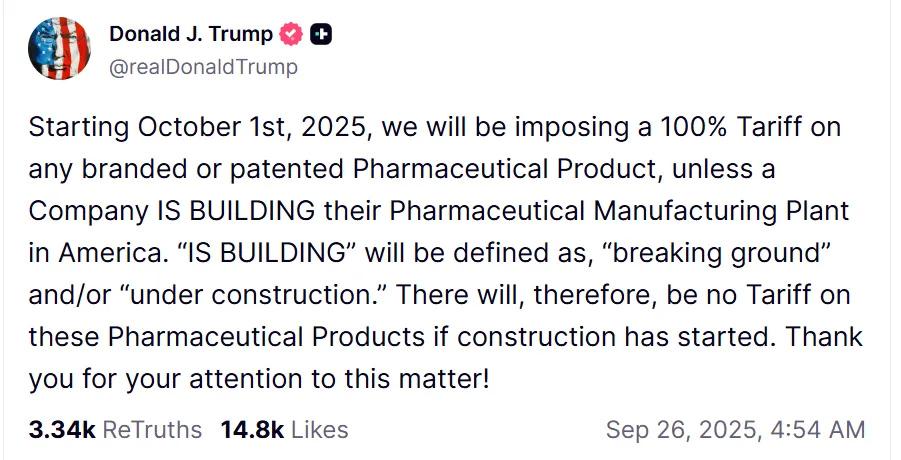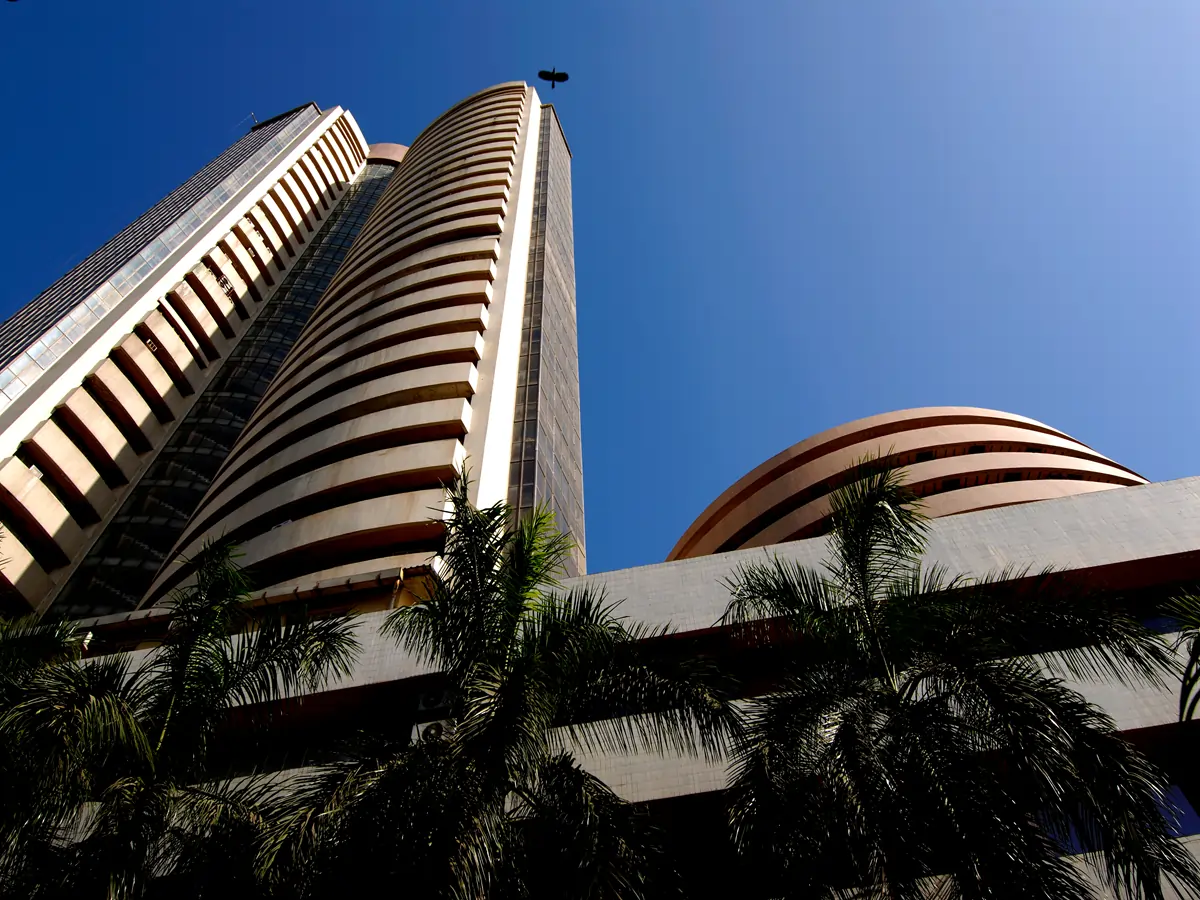Market News
Sun Pharma, Cipla: NIFTY PHARMA slips over 2.3% as Trump announces 100% tariff on pharma; here's what you need to know
.png)
3 min read | Updated on September 26, 2025, 10:28 IST
SUMMARY
100% tariff on pharma: In his social media post on Truth Social, the US president announced that starting October 1, 2025, his administration would impose a 100% tariff on all branded or patented pharmaceutical products unless the manufacturer is actively building a production facility in the United States.

The NIFTY PHARMA index was trading 2.36% lower at 21,458.75 levels in the morning. | Image: Shutterstock
The NIFTY PHARMA index was trading 2.36% lower at 21,458.75 levels, with all 20 constituents trading in the red. The biggest loser was Sun Pharma (down nearly 5%). Other notable losers were Gland Pharma, Natco Pharma, Biocon, and Laurus Labs.
In his social media post on Truth Social, the US president announced that starting October 1, 2025, his administration would impose a 100% tariff on all branded or patented pharmaceutical products unless the manufacturer is actively building a production facility in the United States. He clarified that companies with plants “breaking ground” or already “under construction” would be exempt from the tariff.
According to experts, the impact on the Indian pharma companies is expected to be limited because most Indian firms export generic drugs to the US. However, companies such as Sun Pharma are likely to take a deeper cut as they are in the speciality segment.
Moreover, the news of a 100% tariff on pharma products is sentimentally negative, so stocks of the sector are expected to be under pressure.
A generic drug is a pharmaceutical drug that contains the same active chemical substance as a brand-name drug, which was originally protected by a patent.

Indian Pharma and the US: Key things to know
According to an article by the Observer Research Foundation that was published on August 22, 2025, the US is the world’s largest pharmaceutical market, importing products worth US$212.67 billion in 2024. 90% of prescriptions dispensed in the US are for generic drugs, but they account for only 20% of spending, indicating that a considerable amount of drug spending goes towards patent-protected medicines.
Observer Research Foundation (ORF) is an independent global think tank based in Delhi.
As regards India, the article notes that the US healthcare system is heavily reliant on India. India supplies 47% of its generics and is instrumental in ensuring access to vital medicines at affordable prices. Indian-made generic rosuvastatin illustrates this — after its entry into the market, the number of Americans who were able to afford the drug doubled between 2016 and 2022.
"If tariff pressure on generics exceeds 10-15%, it could lead Indian manufacturers to withdraw from the US market due to their extremely thin profit margins or even force them to implement cost-cutting measures that may compromise the quality of the drug. The result of the tariffs, therefore, poses a direct threat to US public health security by triggering drug shortages and raising drug costs for American patients," it said.
According to a report published by Pharmaceutical Technology in June 2025, the US is India’s largest trading partner and the largest export market for Indian-manufactured pharmaceuticals, accounting for 31.35% of India’s total pharmaceutical exports.
Generic drug products account for the majority of this percentage, such that almost half (47%) of all generics used in the US are imported from India. "India imposes a 10% tariff on US pharma imports, while the US does not currently charge any reciprocal duties," the article had said.
Related News
About The Author
Next Story


